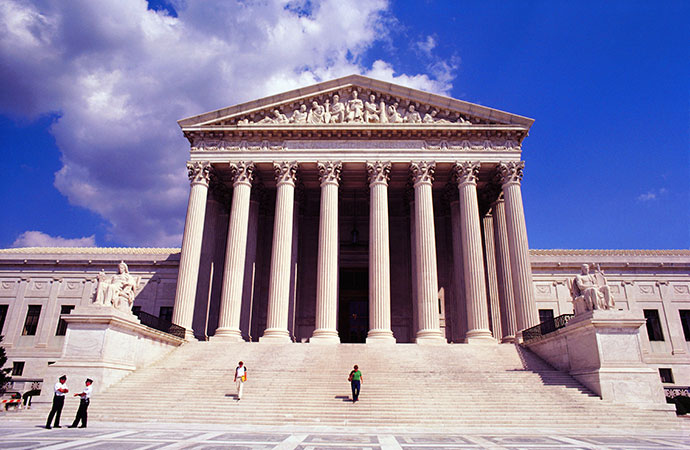This article first appeared in the Daily Caller.
Some leftists want to pack the Supreme Court to make it more “progressive.” The idea is this: The next time Democrats control both Congress and the presidency, they can raise the number of justices. That would empower a Democratic president to add more liberal activists to the bench.
If you consider the court objectively, you have to wonder why the court packers are so vehement. Contrary to propaganda from both the left and the right, the present Supreme Court is not at all conservative. This is especially true if you define a “conservative” as a jurist who consistently applies the Constitution in accordance with traditional rules of judging. Only one of the current justices — Clarence Thomas — meets that definition.
By modern standards it is more accurate to describe the current bench as centrist or consolidationist. It probably will not invent new social law, but it also won’t upset the “progressive” jurisprudence built up during the 20th century. Considered across the span of American history, in fact, the present court is rather liberal.
So you can argue that the court packing plan is driven by mere hysteria. But a better explanation is that the packers aren’t satisfied with a centrist court. They want one driving society to the left—extending, for example, the abortion and homosexual marriage decisions to constitutionalize even more of the left’s social agenda. Judging by their outrage at the recent district court case striking down Obamacare, they probably also want the court to erase whatever state jurisdiction remains outside federal control.
Could they pack the court successfully? If Democrats win more elections, I think they can.
The Constitution doesn’t stand in the way. It provides only that there shall be “one supreme Court, and in such inferior Courts as the Congress may from time to time ordain and establish.” The Constitution prescribes a chief justice, but otherwise gives Congress control over the number of justices.
Congress has changed that number from time to time. The initial number (in 1789) was six. Before it became settled at nine, it rose to ten. When Congress alters the tally, Congress sometimes does so for political reasons. For example, in 1801 the outgoing Congress, dominated by the Federalist Party, provided that at the next vacancy the tally would drop from six to five. The goal was to prevent incoming President Thomas Jefferson from filling the slot. However, before a vacancy arose, a new Congress controlled by Jefferson’s party raised the figure back to six.
The most famous effort to pack the court occurred in 1937. The tribunal had struck down a few of President Franklin D. Roosevelt’s New Deal measures, so FDR asked Congress to add one additional justice for each one aged 70 or more. This would have allowed Roosevelt to nominate six more liberal jurists.
FDR’s scheme failed. But we shouldn’t assume a future scheme would fail. FDR’s adversaries won partly because they were lucky: Chief Justice Charles Evans Hughes, a moderate progressive and an exceptionally gifted politician, sided with them and led the opposition. Opponents of a future plan might not have a leader like Hughes.
In addition, many members of FDR’s Democratic Party rebelled against court tampering. But today’s Democratic Party stands much further left than it did in 1937, with less regard for traditional institutions and a far more steely determination to run roughshod over them.
Ultimately, FDR packed the court the old fashioned way: As vacancies opened up, he nominated determined political liberals with little practical judicial experience to temper their liberalism. As a result, the court for a time abandoned any effort to enforce the Constitution’s limits on congressional and presidential power. The practice of appointing judicial liberals was fruitful for FDR, and for later Democratic presidents.
But appointment often has not worked well for Republicans: Again and again, Republican presidents have been elected pledging to reform the court. But again and again, their nominees veer to the left once they are on the bench. The list is of Republican failures is very long: Eisenhower appointees Brennan and Warren; Nixon appointees Blackmun and, to a lesser extent, Powell and Burger; Ford nominee Stevens; Reagan nominee Kennedy; Bush-41 nominee Souter, and, to a certain extent, Bush-43 nominee Roberts.
Indeed, among the many GOP appointments since 1953, only Clarence Thomas (chosen by Bush-41) has proved a consistent originalist.
So conservatives need a new plan for reforming the court far more than liberals do. That’s the topic of a later column.








